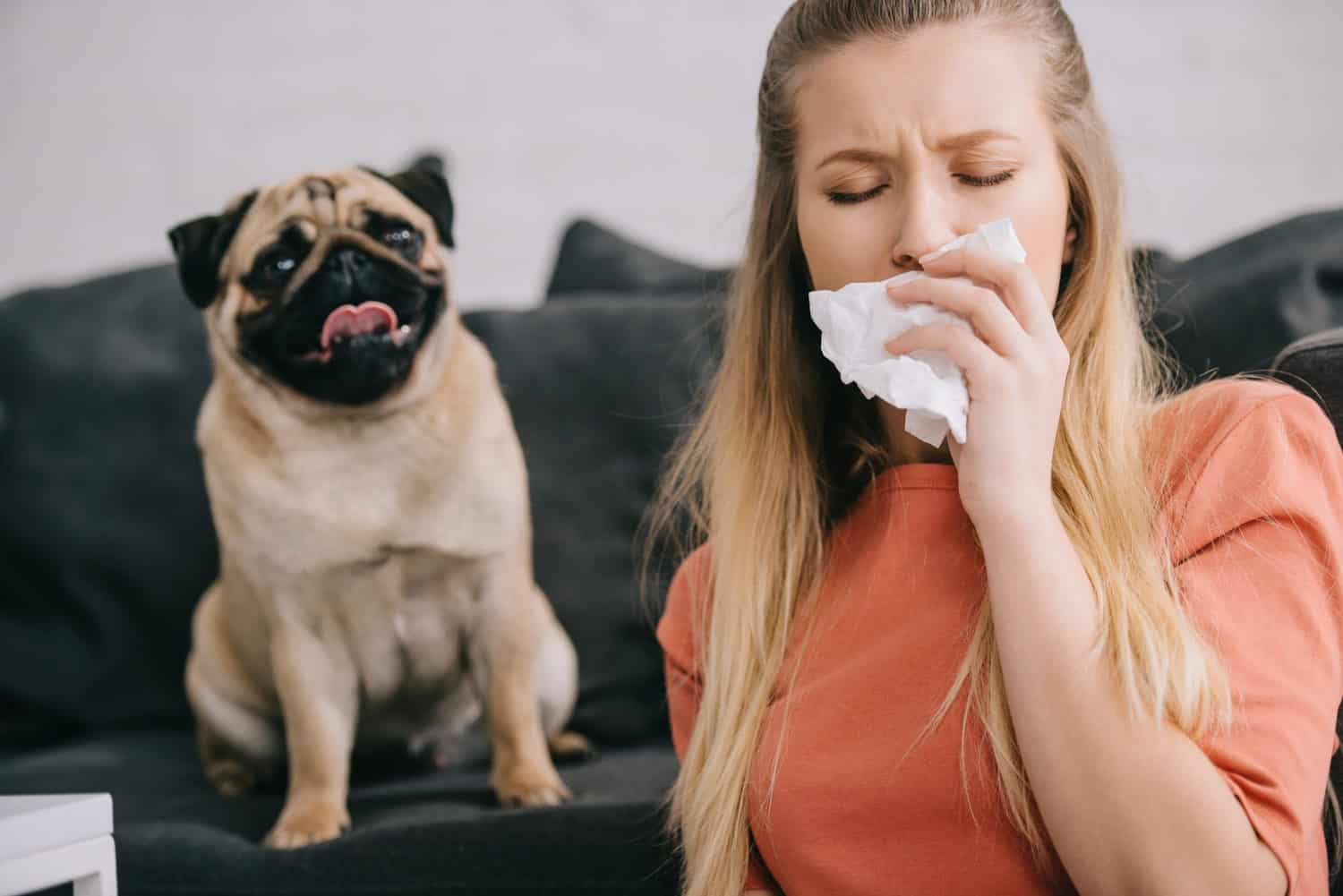Are You Allergic to Your Pet?
Symptoms can include red, itchy, watery eyes and nose; sneezing; coughing; scratchy or sore throat; itchy skin, and most serious of all, difficulty breathing. The most common pet allergens are proteins found in their dander (scales of old skin that are constantly shed by an animal), saliva, urine, and sebaceous cells. Any animal can trigger an allergic response. Allergic symptoms result from the total cumulative allergen load. That means that if you eliminate some of the other allergens, you
may not have to get rid of your pet. Read on for some helpful tips:
Improving the Immediate Environment
- Create an allergen-free room. A bedroom is often the best and most practical choice. By preventing your pet from entering this room, you can ensure at least eight hours of freedom from allergens every night.
- Limit fabrics. Allergens collect in rugs, drapes, and upholstery, so do your best to limit or eliminate them from your home. If you choose to keep some fabrics, steam-clean them regularly. You can also cover your furniture with sheets or blankets which you can remove and
wash regularly. - Vacuum frequently using a vacuum equipped with a HEPA (high-efficiency particulate arresting) filter or a disposable electrostatic bag.
- Install an air purifier fitted with a HEPA filter. Our modern, energy-efficient homes lock in the air that is loaded with allergens, so it’s smart to let in some fresh air daily.
- Use anti-allergen room sprays. These sprays deactivate allergens, rendering them harmless. Ask your allergist for a product recommendation.
Decontaminating Your Pet
- Bathe your pet at least once a week. Your veterinarian can recommend a shampoo that won’t dry out his skin. Bathing works to wash off the allergens that accumulate in an animal’s fur.
- Wipe your pet with a product formulated to prevent dander from building up and flaking off into the environment. Ask your veterinarian to suggest one that is safe to use on animals who groom themselves.
- Note any symptoms of dermatitis exhibited by your companion animal. Dermatitis often leads to accelerated skin and fur shedding, which will up your allergen exposure.
- Brush or comb your pet frequently. It’s best to do this outdoors, if possible.
Taking Care of Yourself
- If possible, have someone other than yourself do the house cleaning, litter box work and pet washing, wiping, and brushing. If you must clean the house or change the litter, be sure to wear a dust mask.
- Wash your hands after handling your companion animal and before touching your face. The areas around your nose and eyes are particularly sensitive to allergens.
- Designate a “pet outfit” from among your most easily washed clothes. Wear it when playing or cuddling with your companion, and you’ll leave other clothing uncontaminated.







